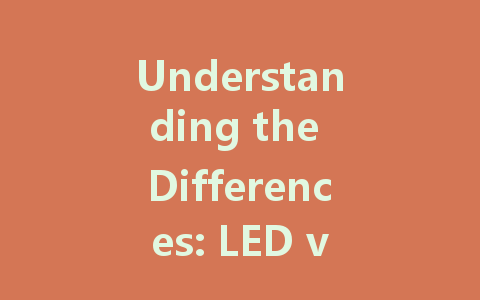
In today’s tech-savvy world, choosing the right display screen can be daunting, especially with the abundance of options available. Among the most common options are LED and LCD screens. Despite the frequent use of these terms interchangeably, they represent different technologies that cater to various preferences and needs. In this article, we will explore what LED and LCD screens are, their differences, and which option might be best for you.
What is an LCD Screen?
LCD, or Liquid Crystal Display, is a flat-panel display technology that uses liquid crystals to produce images. These screens are illuminated by a backlight, typically composed of a series of fluorescent tubes or LEDs. LCD screens are widely used in TVs, computer monitors, and mobile devices due to their thin nature and energy efficiency.
How LCD Works
The technology behind LCD screens involves liquid crystals that change alignment when electrical currents pass through them. This change in alignment affects the light that passes through them, creating images. The backlight provides the necessary brightness to make the images visible. LCD screens are known for their ability to produce clear images and are often favored for picture quality.
What is an LED Screen?
LED, or Light Emitting Diode, refers to a type of display technology that is actually a form of LCD. The primary difference lies in the backlighting used in the display. LED screens utilize an array of tiny light-emitting diodes that produce bright and vivid images, as opposed to the traditional fluorescent backlight found in the earlier models of LCD screens. Because of this distinct backlighting method, LED screens are more energy-efficient and can achieve higher levels of contrast.
Types of LED Screens
Key Differences Between LED and LCD Screens
While LED screens are essentially a type of LCD technology, there are key differences worth noting:
LED screens provide superior brightness levels and more vibrant colors compared to standard LCD screens. The use of tiny diodes allows LED screens to achieve greater dynamic range and deeper blacks, which enhances overall viewing experiences.
LED screens are generally more energy-efficient than traditional LCDs. They consume less power due to their advanced backlighting, making them a more eco-friendly choice. This helps save on electricity bills while being kinder to the environment.
Contrast ratio speaks to the difference between the darkest and lightest parts of an image. LED technology usually offers higher contrast ratios compared to traditional LCD screens, thanks to local dimming capabilities that allow for more precise control of light and darkness on the display.
LED screens tend to be thinner and lighter than traditional LCD screens because they require less bulk for backlighting. This can be an essential factor for wall-mounted televisions or portable devices where space is limited.
Which Should You Choose: LCD or LED?
Choosing between LCD and LED screens ultimately depends on your needs and the specific application.
For Everyday Use
For general use such as browsing, word processing, or watching standard definition content, an LCD screen may suffice. They are often more budget-friendly and still offer decent picture quality for non-demanding applications.
For High-Quality Viewing
If you often watch high-definition content, play video games, or have a home theater setup, investing in an LED screen is advisable. The better brightness, color accuracy, and contrast ratios will significantly enhance your viewing experience.
Considerations for Outdoor Use
If you’re looking for displays for outdoor events or digital signage, LED screens are typically preferred due to their superior brightness and visibility in direct sunlight. Their resilience to varying environmental conditions also makes them suitable for outdoor applications.
Conclusion
Understanding the differences between LED and LCD screens is essential when making informed purchasing decisions. While both technologies offer distinct features and benefits, LED screens generally surpass traditional LCDs in brightness, energy efficiency, and color accuracy. However, the right choice for you largely depends on your intended use and budget. By weighing your options, you can select a display that meets your needs, ensuring an enjoyable viewing experience for years to come.